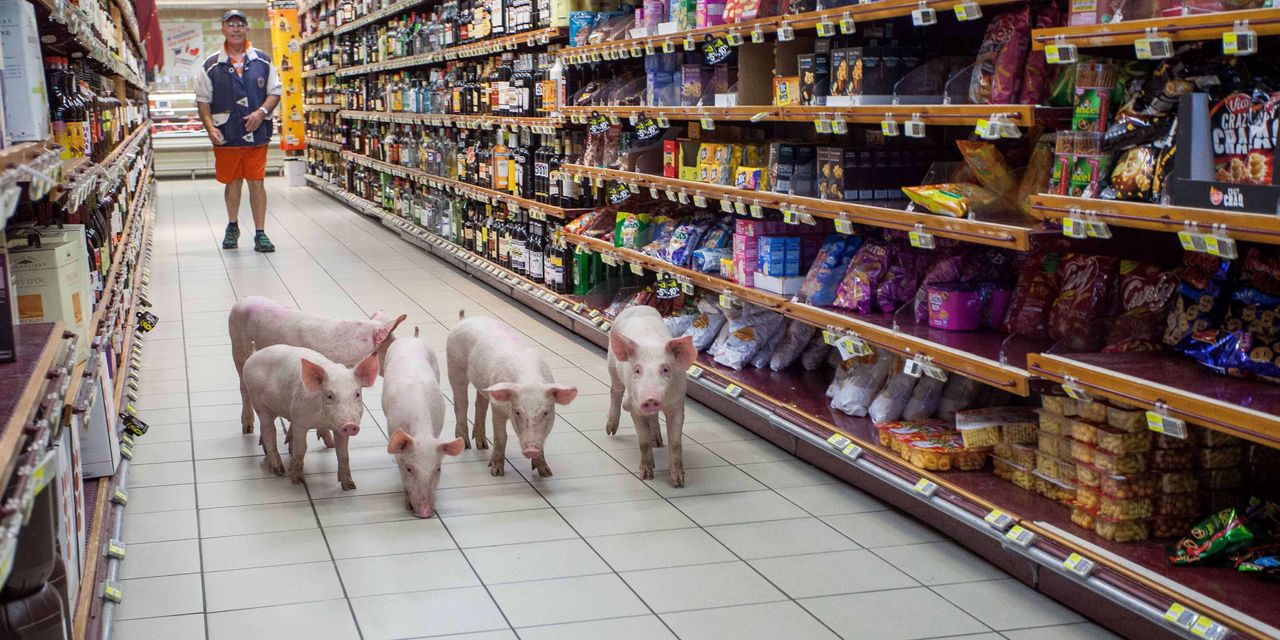That’s the practice by many S&P 500 food and consumer companies of raising prices to protect what a new report calls their “cushioned corporate profits,” and it has enabled them to boost margins through the current inflationary period.
Companies including Kimberly-Clark Corp.
KMB,
PepsiCo Inc.
PEP,
General Mills Inc.
GIS,
and Tyson Foods Inc.
TSN,
have on recent earnings calls touted their ability to raise prices, earning tidy profits and rewarding their shareholders as they go, according to the report from Accountable.US, a liberal-leaning consumer-advocacy group.
And they have signaled their intention to continue to take “price actions” even as the Federal Reserve has hiked interest rates an unprecedented 10 times in an effort to tame inflation.
“Higher interest rates haven’t stopped S&P companies, especially in the big food industry, from raising consumer prices despite reporting billions in extra net earnings and over a trillion dollars in new giveaways to wealthy investors,” said Liz Zelnick, director of economic security and corporate power at Accountable.US.
“Corporate greed is a stubborn thing and requires serious action from Congress. The Fed has not seen an adequate return on its investment in a policy that has already created fissures in the economy that could lead to recession. It’s just not worth it,” she said.
Now read: Skip, pause or hike? A guide to what is expected from the Fed on Wednesday.
Accountable.US is not alone in calling out price hikes on essentials including food. Walmart Inc.
WMT,
is also unhappy with packaged-food companies that have steadily raised prices in dry grocery and consumable goods, according to a recent report from research company CFRA.
“Given Walmart’s enormous bargaining power over its suppliers, we expect the retail giant to push back on further price increases from its packaged-food suppliers,” he said. That is expected to hurt margins, especially if volume growth does not recover.
For more, see: Inflation in goods from cereal to soup has given a boost to consumer food stocks. Can Walmart help bring prices, both food and stock, down?
May inflation data released Tuesday found that food prices were up 0.2% from April, after remaining flat for the previous two months. Food prices are up 6.7% over the last year. The food-at-home index is up 5.8% over the last year, while the index for cereals and bakery products is up 10.7%.
Food prices started to rise about two years ago, when supply-chain issues and higher fuel and commodity prices led companies to pass some of those costs on to customers.
But companies appear determined to raise prices even more, despite a decline in shipping and gas costs. Gasoline was down 5.6% in May from April and fuel oil fell 7.7%, according to consumer-price-index figures.
Also read: U.S. inflation slows again, CPI shows, and might keep Fed on sidelines
Kimberly-Clark executives told analysts on its recent earnings call that the company is able to “rapidly implement broad pricing actions” and acknowledged that “pricing has continued to be a big driver behind our top-line growth.”
The company’s first-quarter earnings topped expectations and it raised guidance for the full year. That’s after it raised prices by 10% for a second straight quarter, driving margins wider by 340 basis points.
Shareholders were rewarded to the tune of $425 million during the quarter, the Accountable.US report notes.
See also: Colgate-Palmolive’s stock pops after earnings beat as company raises prices by double-digit percentage
PepsiCo Chief Executive Ramon Laguarta told analysts on that company’s recent earnings call that most of its price increases are behind it.
However, he said, “obviously, there are some markets, highly inflationary markets around the world, where we might have to take additional pricing. If you think about Argentina, Turkey, Egypt — those kinds of markets where the currencies are suffering. But the majority of our pricing is already done,” he said, according to a FactSet transcript.
PepsiCo’s 2022 earnings rose 16.9% to nearly $9 billion, and it spent more than $7.6 billion on stock buybacks and dividends, with the former up 1,313% from 2021.
General Mills, meanwhile, bragged about “getting smart about how we look at pricing” on its recent call. The parent of brands including Cheerios, Nature Valley, Blue Buffalo pet products and Pillsbury raised its fiscal 2023 guidance in February.
And Tyson executives touted the “significant pricing power of our portfolio with a year-over-year increase of 7.6%.” Tyson’s latest quarter included a surprise loss, as it was hit by weak demand for meat, along with plant closures and job cuts.
For more, see: Tyson Foods stock slides after meat producer swings to surprise loss
But Tyson had net income of over $3.2 billion in 2022, up from $3 billion in 2021, and it rewarded shareholders with $1.35 billion in buybacks and dividends.
For Accountable.US, it’s more compelling evidence that the Fed’s rate-hike strategy “has failed to root out one of the main drivers of inflation and should give the [Federal Open Market Committee] pause before lifting rates again this week to the detriment of jobs and the economy.”
The Consumer Staples Select Sector SPDR exchange-traded fund
XLP,
has fallen 1.6% to date in 2023, while the SPDR S&P Retail ETF
XRT,
has gained 4.6%. The S&P 500
SPX,
has gained 13% in the same period.
Read the full article here











